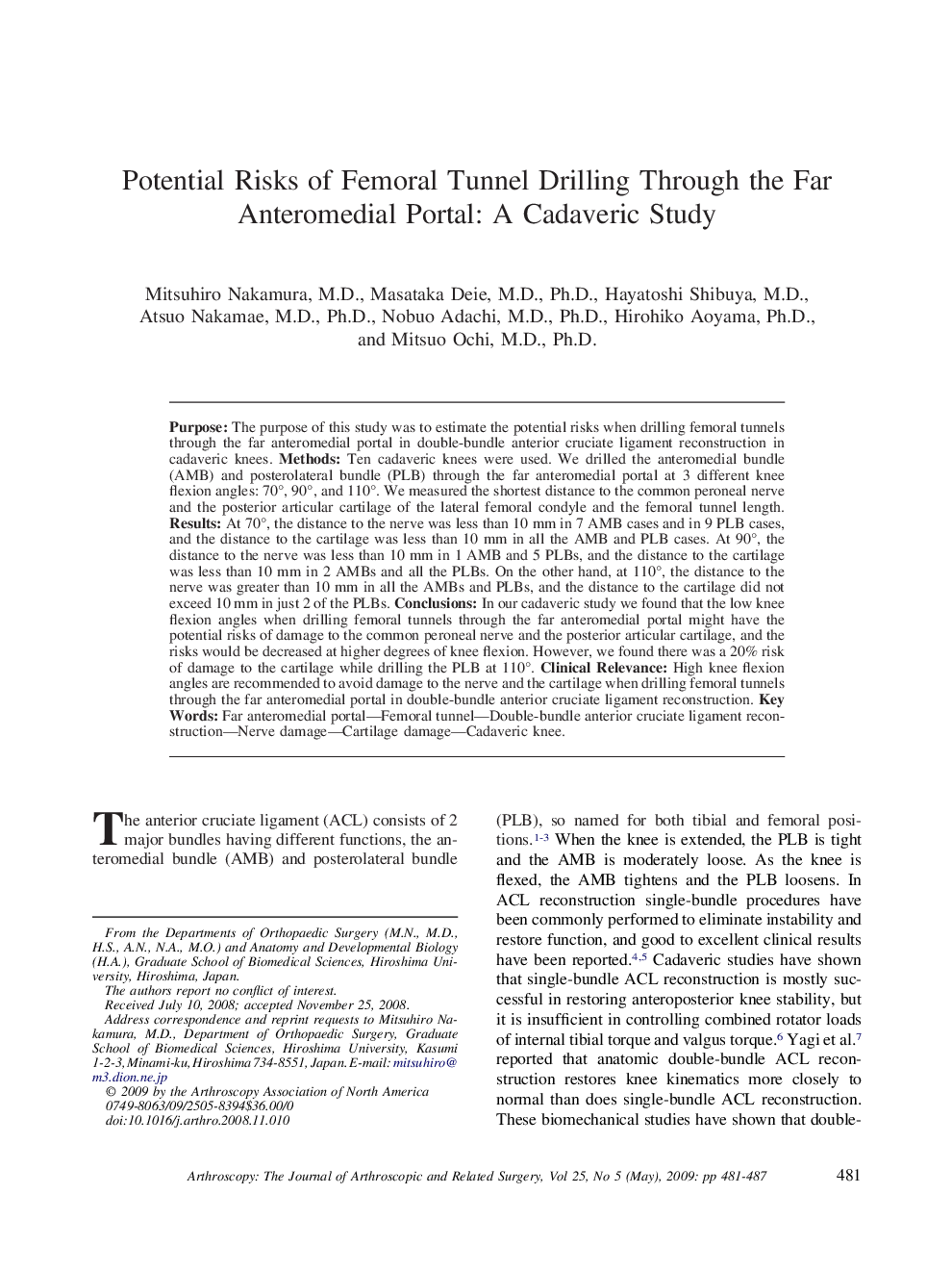| Article ID | Journal | Published Year | Pages | File Type |
|---|---|---|---|---|
| 4045503 | Arthroscopy: The Journal of Arthroscopic & Related Surgery | 2009 | 7 Pages |
PurposeThe purpose of this study was to estimate the potential risks when drilling femoral tunnels through the far anteromedial portal in double-bundle anterior cruciate ligament reconstruction in cadaveric knees.MethodsTen cadaveric knees were used. We drilled the anteromedial bundle (AMB) and posterolateral bundle (PLB) through the far anteromedial portal at 3 different knee flexion angles: 70°, 90°, and 110°. We measured the shortest distance to the common peroneal nerve and the posterior articular cartilage of the lateral femoral condyle and the femoral tunnel length.ResultsAt 70°, the distance to the nerve was less than 10 mm in 7 AMB cases and in 9 PLB cases, and the distance to the cartilage was less than 10 mm in all the AMB and PLB cases. At 90°, the distance to the nerve was less than 10 mm in 1 AMB and 5 PLBs, and the distance to the cartilage was less than 10 mm in 2 AMBs and all the PLBs. On the other hand, at 110°, the distance to the nerve was greater than 10 mm in all the AMBs and PLBs, and the distance to the cartilage did not exceed 10 mm in just 2 of the PLBs.ConclusionsIn our cadaveric study we found that the low knee flexion angles when drilling femoral tunnels through the far anteromedial portal might have the potential risks of damage to the common peroneal nerve and the posterior articular cartilage, and the risks would be decreased at higher degrees of knee flexion. However, we found there was a 20% risk of damage to the cartilage while drilling the PLB at 110°.Clinical RelevanceHigh knee flexion angles are recommended to avoid damage to the nerve and the cartilage when drilling femoral tunnels through the far anteromedial portal in double-bundle anterior cruciate ligament reconstruction.
